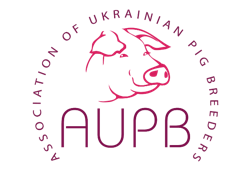The average cost of building a pig farm for growing and finishing pigs in the United States is currently $1-1.2 million. The price per square meter without equipment is about $170, with equipment — $ 320. The vast majority of fattening facilities have curtains on the side walls of the pig complex, which makes it possible to provide either natural (curtains are raised, air freely enters the room) or tunnel ventilation in summer (curtains are lowered, air is drawn into the room through several entrances and extracted from the other end of the building by powerful fans), depending on the temperature and humidity outside. Pigs on such farms are cooled mainly by fogging (spraying water under high pressure). The typical size of a growing and fattening farm is 2400 heads at a time.
"It is much more expensive to build today than even a few years ago. The average cost of a growing and fattening complex has increased from USD 600 thousand. USD to more than 1 million USD. USD. This means that the payback period of the average fattener, which in the recent past averaged 10-12 years, will also increase," Precision Decisions Ltd.
Today, the US pork industry is going through a difficult period. According to the owner of Vittetoe Pork Llc, which has been developing the business since 1980 and currently has 15 thousand sows, although the market price is quite high, production costs are not covered. Therefore, a farmer in the United States today loses an average of $20-25 per head. USD per head.
"In fact, today only those farmers who grow and fatten pigs under contract earn money. They do not own the animals, they receive a stable fixed fee for a pig bed per year on their farm: after taking piglets after weaning, they are fed to slaughter conditions. All market risks are borne by an integrator company like us, which owns the pigs," Vittetoe Pork said.
The difficult period for producers is caused by the rise in the cost of feed raw materials at a time when the price curve for pigs is almost flat. Of the $170 a producer receives per head today, more than $100 is spent on feed. And this is despite the fact that more expensive soybean meal was removed from fattening diets and replaced with cheaper post-alcohol bard (a by-product of ethanol production from corn).
At the same time, business owners remain hopeful that the crisis will soon be over, as they are used to the industry's cyclical nature.
USAID's agricultural development program (AGRO) aims to promote inclusive and sustainable economic growth through agricultural development in Ukraine.
The Association of Ukrainian Pig Breeders (AUPB) is a non-profit, voluntary organization founded by domestic pork producers. The main goals of the association are to represent and protect the rights and interests of the association's farms, promote the development and implementation of new technologies for efficient pork production, expand sales markets, and protect the domestic market.




